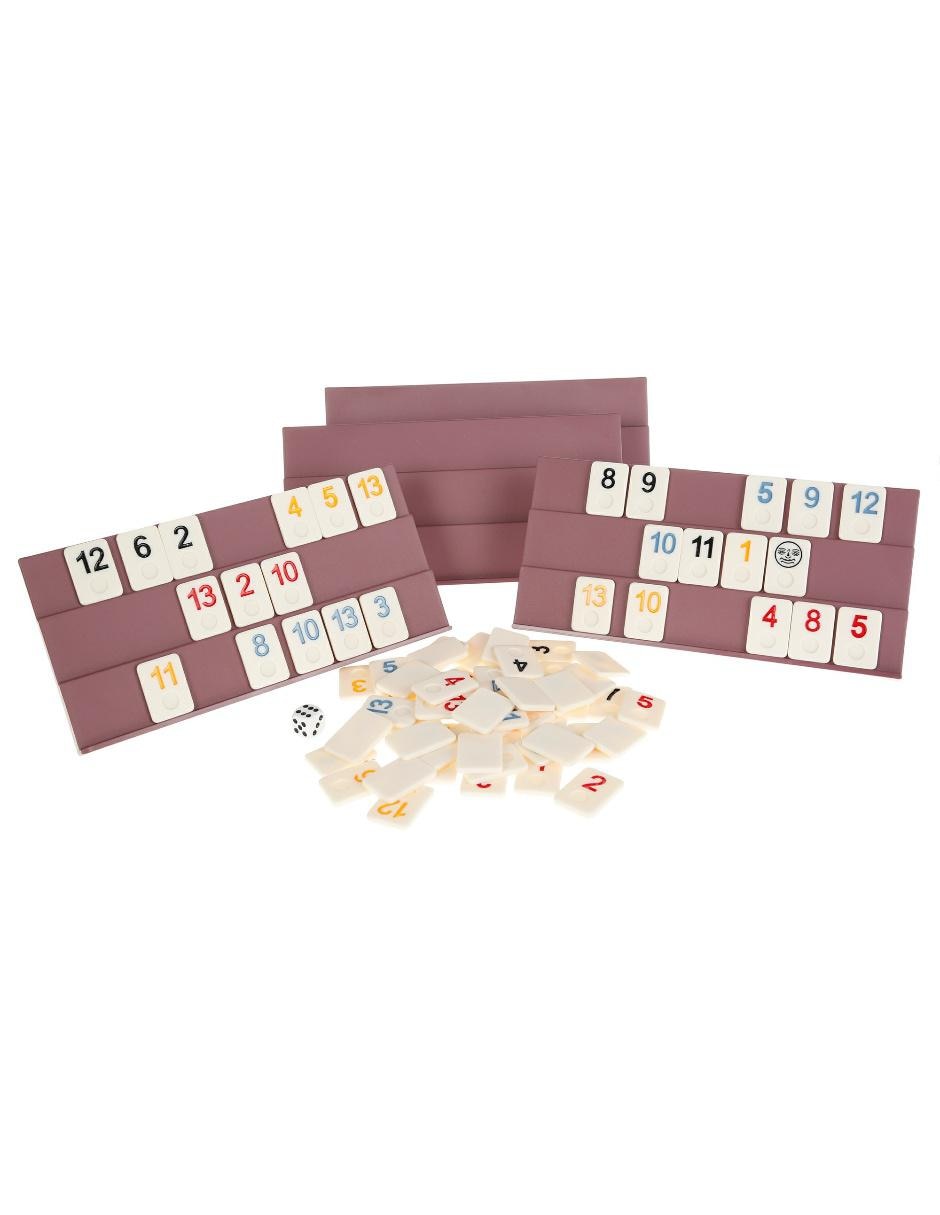Liverpool Rummy
Posted : admin On 4/7/2022My family has been playing the card game Liverpool Rummy at family gatherings for generations. To help keep track of each player's points, I designed a score sheet that also doubles as the winner's trophy given out at the end of the game. The sheet also includes some additional rules and ti.
- Liverpool Rummy is a multi-player, multi-round card game similar to other variants of rummy that adds features like buying and going out. It's the same as Contract Rummy, except that if a player manages to cut the exact number of cards required to deal the hand and leave a face-up card, then the cutting player's score is reduced by 50 points.
- Liverpool Rummy uses at least two standard decks of playing cards, including the Jokers. The card values are easy to remember with Aces being worth 15 points, Jokers will be worth 25 points, the face cards are each worth 10 points, and numeric cards are worth their face values.
Shanghai Rummy, also known as California Rummy, is a variation on the popular game of rummy.The basics of the Shanghai Rummy card game are simple to grasp, and the ease of play makes it a popular choice among campers and families alike. Liverpool Rummy - A version with fewer contracts and more jokers Shanghai Rummy - A version with more contracts and wilder scoring Other names for Contract Rummy include 'Combination Rummy', 'Deuces Wild Rummy', 'Hollywood Rummy', 'Joker Rummy', 'Shanghai Rummy', and 'Zioncheck'.

Contract Rummy is believed to have originated from a game called Zioncheck thatwas devised by Ruth Armson. David Parlett suggests that Contract Rummy cardgames followed on from Contract Bridge which was popular in the 1930's. Othernames for Contract Rummy include Shanghai Rummy, Liverpool Rummy, Joker Rummy,Progressive Rummy, Combination Rummy, King Rummy and Continental Rummy.
Some of these are slight variations on the original Contract Rummy but the basicprinciples are the same. There are a series of deals, each of which have a setrequirement, or contract, in terms of the type of melds that need to beachieved for going out and are of a fixed character. The contract must beformed first, before any other cards may be laid down. The contracts becomeprogressively more demanding on each round.
Setup
Players: 2 to 5+ players. The optimum number of players is 3 or 4.

Cards: With up to four players shuffle together 2 standard decks of 52cards. For five or more players use 3 decks. The number of jokers used should beone fewer than the number of players, so for 3 players add in 2 Jokers, for 5players add in 4 Jokers, etc.
The Deal: The dealer is chosen at random. Cut the cards and deal one cardout to each player. The person with the lowest card starts out as the dealer,Ace is lowest in the draw. Each round, the dealer moves to the left. Play willstart with the player to the dealer's left and continues around to the left.
For the first four rounds the dealer will deal 10 cards to each player, one at atime. For the last three rounds, each player receives 12 cards.
After the cards are dealt to all players, the dealer places the remaining cardsface down in a pile on the table forming the stock pile. The top card is flippedover to start the discard pile.
Objective: Just as in Standard Rummy the objective of the game is toform your cards into Sets and Runs, although there are slight differences inwhat constitutes valid sets or runs outlined in the next section. For each roundof the game there is a different 'Basic Contract' that must be fulfilled beforeanything else can be done. The contracts are a specific mix of Sets and/orRuns, and are as follows:
| Round | Cards | Basic Contract |
|---|---|---|
| 1 | 10 | Two Sets |
| 2 | 10 | One Set, One Run |
| 3 | 10 | Two Runs |
| 4 | 10 | Three Sets |
| 5 | 12 | Two Sets, One Run |
| 6 | 12 | One Set, Two Runs |
| 7 | 12 | Three Runs |
It should be noted that the minimum number of cards required to form the BasicContract of the deal increases by one card for each subsequent round. Forexample, in Round 1 you only require 6 cards to form two sets. In Round 2, yourequire at least 7 cards to form one set and one sequence, and so on. In Round7, the first meld of this deal ends play and it must be achieved with nounmatched cards. In other words, it must be a complete hand.
Melds
In Contract Rummy a minimum of 4 cards is required to form a run, instead of theusual 3 cards in most other Rummy games. In addition, any three cards of thesame rank may form a set regardless of suit, and therefore a set formed of A-A-A is a valid set.
Also, where two runs are required in a Basic Contract, they must be of differentsuits. If they are not of different suits, then they must not be in consecutiveorder. For example, a sequence of 2-3-4-5-6-7-8-9 countsas just one run. However, 2-3-4-5-7-8-9-10 is consideredto be two runs because of the break between the 5 and the 7.
Ace can be counted as high or low, but not both at once. So sequences like J-Q-K-A and A-2-3-4 are valid melds, but K-A-2-3 are not.
Game Play
Play commences with the player to the left of the dealer taking a turn andcontinues clockwise until the round ends.
Players do the following actions when it is their turn:
Draw: The player begins by drawing one cards from either the stock pileor the discard pile and adding it to his or her hand.
Buy (the 'May I?') (optional): If the card on top of the discard pile(the upcard) is not wanted by the player whose turn it is, that card may beasked for by another player. Hence the term 'May I?'. This means the card canbe picked up and 'bought' by the other player even though it is not theirturn yet. The player who 'buys' must also pick up a card from the stock pile,which is known as a 'penalty card'. The player that does this may not meld,lay off or discard since it is not his turn. Also he must still must pick upanother card on his turn, which means that he will have two extra cards,though one or both may help him complete a contract. If more than oneplayer wishes to buy the upcard the precedence is given to the player whoseturn comes first.
After the buy is completed control returns immediately back to the playerwhose turn it is, who draws the top card of the stock pile. He may not drawthe next card on the discard pile, having already refused the first one.
Meld (optional): If the player has cards that can be formed into thebasic contract then they may lay them down at this time. This is called'fulfilling the contract'. Only the specific number of cards needed for thecontract may be melded when fulfilling the contract. No other cards can belaid down by the player until the turn after their contract has beenfulfilled.
Lay off (optional): Starting with the turn after the player has meldedthe contract they may lay off cards on any melds already on the table. Thereis no limit as to how many cards that may laid off in one turn.
Joker Substitution (optional): Once a player has laid down the basiccontract he is eligible to take a joker into his hand from a meld on thetable by replacing it with the card it represents. A joker in a sequence maybe moved to either end by a player who wishes to lay off the natural card onthe meld (but no sequence may be comprised of more than 14 cards).
Jokers played as part of a group are considered 'dead'; they cannot bereclaimed and played elsewhere.
- Discard: And the end of his or her turn the player must discard one cardfrom their hand to the face-up discard pile.
Depleted Stock
It can occasionally happen that the stock pile runs out of cards. If a playerwishes to draw a card when there are no cards left in the stock pile, then youtake all the cards of the discard pile except the top one, shuffle themtogether, and place them face down to make a new stock. The top card of the olddiscard pile remains face up to start the new discard pile. Play then continuesas before.
End of Hand
Play continues in this way until one player has gotten rid of all their cards bymelding and laying off.
Scoring
When a player goes out then all the remaining players add up the points of thecards they still have in their hands. Cards have the following point values:
| Card | Value |
|---|---|
| Joker | 25 points |
| Ace | 15 points |
| Face cards | 10 points |
| Others | face value |
A the end of the seven rounds the player with the lowest score wins.
Optional Rules and Variations
The following rules may be added to the standard game if all players agree tothe variation before the first player takes their turn. It’s not an all ornothing deal, the game participants can pick and choose which variations theylike.
Liverpool Rummy
More Jokers: It is common to use both jokers in each deck of cards usedfor the game, instead of limiting the jokers to one less than the number ofplayers.
Dueces wild: The game can be played with all the 2s acting as Jokers. Ifso then they are also worth 25 points at the end of the round.
Score variations: Some play with number cards (2 through 10) counting as5 points each instead of their pip or number value. Some play with jokerscounting as 15 points.
No buying: Some players play without the option for thebuying step of the turns described above, in order to be less confusing fornew players for example.
Multiple buys: After someone has bought the discard out of turn, it ispossible for a different player to take the next card of the discard pile inthe same way, also taking a penalty card from the stock pile along with it.There is no limit as to how many times this can be done, but the same playeris not allowed to take two successive cards from the discard pile in thisway.
Only when the other players have had the opportunity to take any cards theywant from the top of the discard pile does the person who was about to playdraw from the stock and continue their turn.